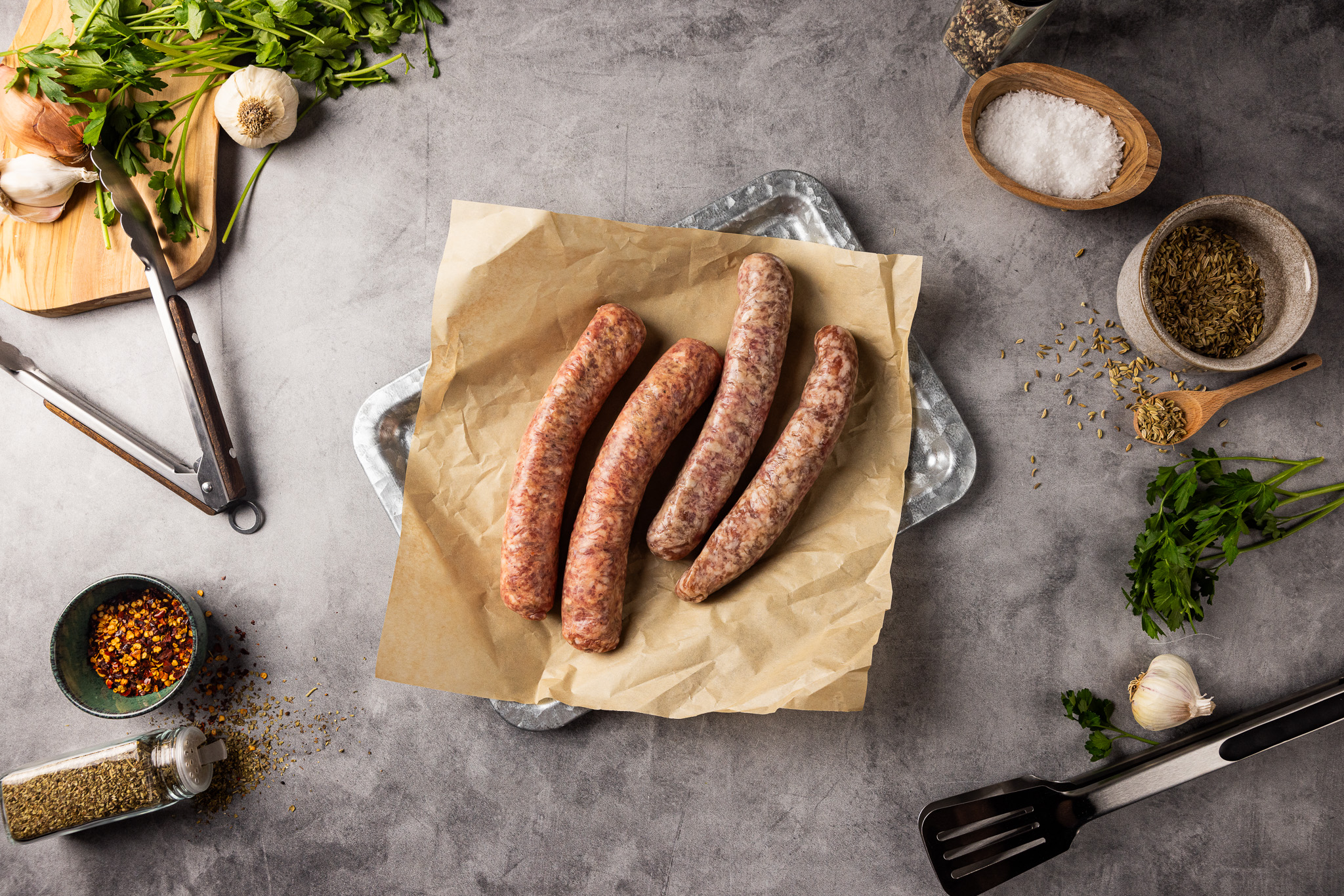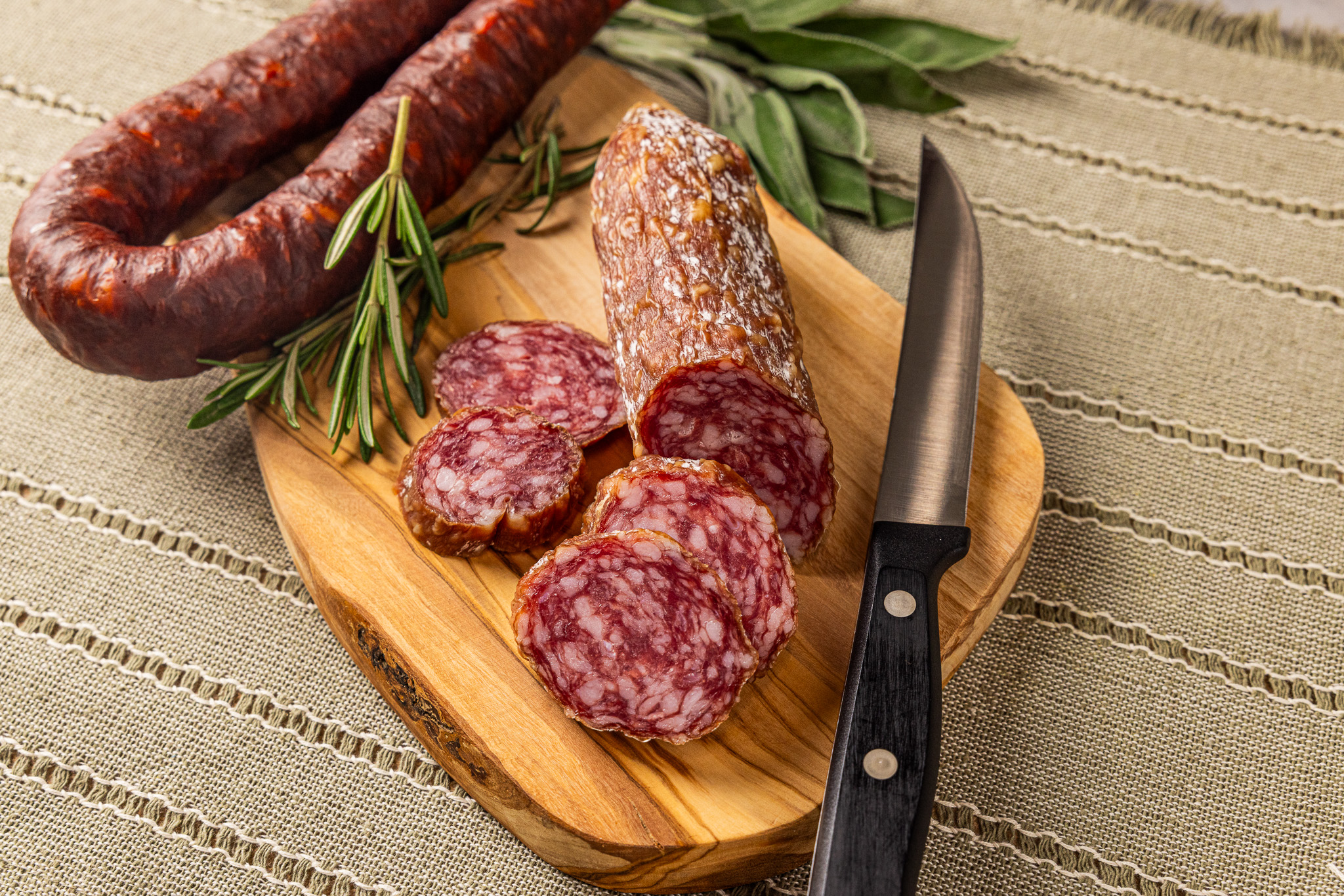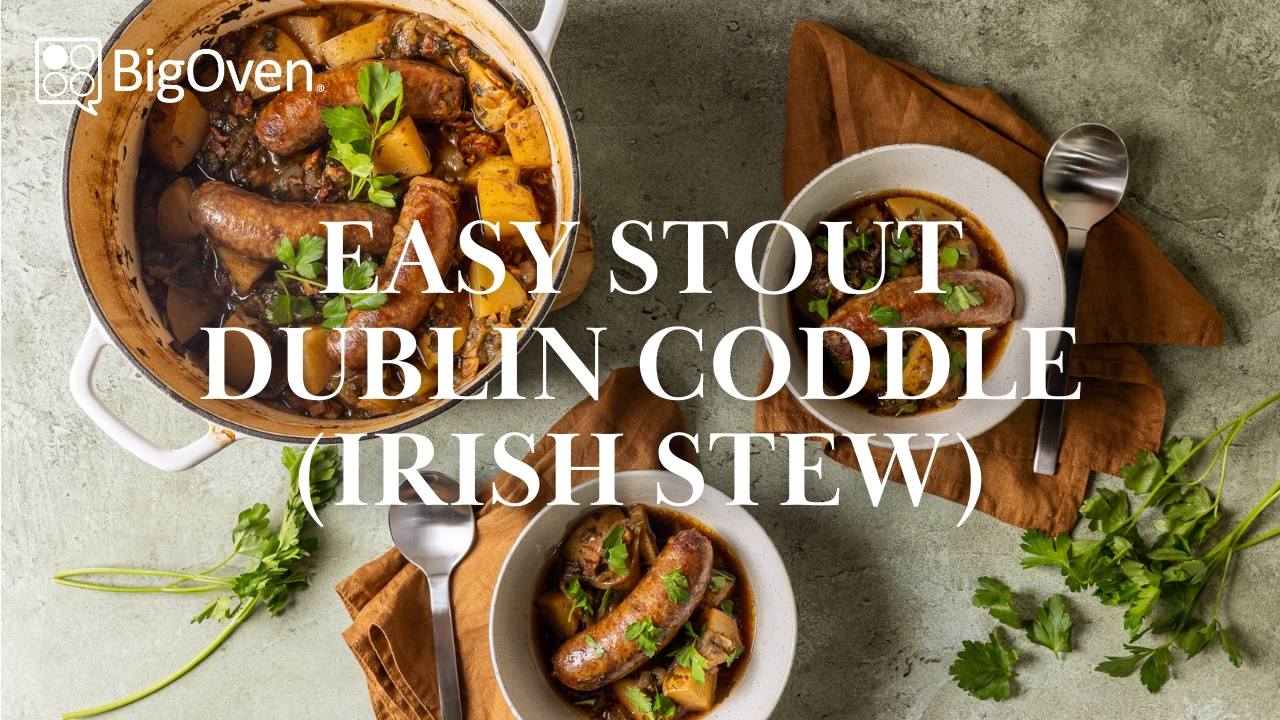Sausage 101: A Buyer's Guide to Sausage
Whether they’re in the form of Spanish chorizo, or the Chinese lap cheong, nations all over the globe have their own versions of the humble sausage. Whether you're a seasoned sausage enthusiast or a curious culinary explorer, this guide will unravel the mysteries of these savory delights. From British bangers to sumptuous saucisson, we'll equip you with the knowledge to make informed choices for your next meal.
With its versatility and deliciousness, sausage can be a key ingredient in pasta and stews, but it can be daunting to choose the right one from the plethora of varieties in the supermarket. After all, whilst we might traditionally associate sausages with pork, sausage meat can also be made from sheep, poultry, beef, or venison. Some are stuffed with herbs like parsley and others with spices like ginger, chili, and paprika, meaning that even the heat and complexity levels can vary. Whether you want mild, medium, or spicy meat, have no fear, sausage enthusiasts! We’re going to delve into the distinctive flavors and characteristics of popular types of those meaty morsel cylinders. So, grab your apron, sharpen your taste buds, and let’s dive into the sizzling world of sausages!

History
Sausages boast a rich history dating back millennia, even predating written records. Its origins lie in efficient butchery, with people utilizing various meat trimmings, organs, and even blood alongside fat and salt for preservation. There is evidence that Ancient Mesopotamians stuffed ingredients into natural casings made from cleaned animal intestines, thus providing creating the iconic cylindrical shape.
Despite this evidence, early civilizations, such as the ancient Greeks and Romans, are also credited with pioneering early versions of sausages, potentially with wild boars or domestic hog. Local butchers played a crucial role, using available meats and seasonings to create distinctive regional varieties. The evolution of sausage-making techniques saw the introduction of natural casings made from animal intestines in ancient times, persisting for centuries and contributing to unique textures and flavors.
In the 19th century, innovations brought about the use of collagen casings, providing a more standardized and convenient option for sausage production. As industrialization took hold, mass production became possible, leading to increased worldwide consumption. The convenience and versatility of sausages made them a staple in many diets, with people incorporating them into various dishes.
While industrial methods are widespread today, there is a resurgence of interest in artisanal and locally crafted sausages. Local butchers and small-scale producers emphasize high-quality ingredients and traditional methods, offering a connection to the historical roots of sausage-making. The use of natural casings is also making a comeback as consumers seek more authentic and natural food experiences.

Varieties of Sausages
Sausages bring a blast of flavors and textures, split into fresh and cured types. Fresh ones need cooking, while cured buddies get their flavor through smoking, drying, or other processes that involve fermentation. Meat choice, from classic pork to funky options like beef, chicken, turkey, or lamb, plays a big role in the taste. Spices like fennel or red pepper give each sausage its vibe. Some, like bratwurst and kielbasa, go for the link look, while breakfast sausage rocks the patty shape.
Let's investigate the tasty world of sausages and examine the fundamental varieties that you can probably discover in your neighborhood grocery store.
Breakfast Sausage
A favorite in the morning, breakfast sausage is a tasty mixture of ground pork seasoned with spices to produce a savory and cozy flavor profile. Breakfast sausages are made with sage, rosemary, and occasionally cayenne or maple syrup. They are available as links or patties. Their ability to be perfectly grilled, pan-fried, or broiled showcases their versatility. Breakfast sausages are a favorite side dish for breakfast meals because their aroma welcomes you in the morning. Breakfast sausages add a burst of flavor that makes the first meal of the day wonderful and fulfilling, whether they are eaten with eggs, in breakfast sandwiches, or crumbled into casseroles.
Bratwurst
The traditional German sausage known as bratwurst is praised for having a robust and savory flavor. Bratwurst has a unique flavor and is made from a mixture of pig, veal, or beef and seasoned with nutmeg, coriander, and white pepper. These sausages, which are popular during grilling season, have a rich, savory flavor that goes well with crusty bread, sauerkraut, and mustard. Bratwurst is a beloved and classic addition to the sausage world because of its strong flavor and versatility, which allow it to be served at barbecues, festivals, and traditional German cuisine.
Italian Sausages and Salami
Italian sausages are a tasty addition to the sausage world, known for their hearty and delicious flavor. These sausages, which come in sweet and spicy types, are usually produced from pig and have a unique flavor thanks to the seasoning mix of fennel, garlic, and red pepper flakes. Italian sausages are perfect for grilling, pan-frying, or simmering in sauces because of their flavorful, fragrant qualities. Italian sausages add a touch of Mediterranean flair to the table, whether they are served with pasta, in sandwiches, or as a topping for pizza.
Italy's favorite cured sausage, salami, is renowned for its flavorful, deep bite. Salami is a meat product that is fermented and air-dried, usually pork or a mixture of meats. It is seasoned with salt, garlic, and other spices.
The Polish Sausage, Kielbasa
Among sausages, the well-liked Polish sausage known as kielbasa is a savory and filling treat. Made from a mixture of pork that has been spiced with garlic, marjoram, and other herbs, Kielbasa has a delicious, powerful flavor that ranges from slightly smoked to very flavorful. Its adaptability to several cooking techniques, such as pan-frying, boiling, or grilling, makes it a useful ingredient in a variety of cuisines. Kielbasa is a delightful and soothing addition to any meal, whether it is eaten by itself, in a sandwich, or combined with other ingredients to make stews or casseroles. Kielbasa is a famous dish from Poland, with strong origins in culinary traditions. It is renowned for its flavor and versatility in a variety of recipes.
Andouille
Andouille is a sausage known for its unique flavors and spike of heat, with origins in both French and Louisiana Creole cuisines. Andouille, which is usually made from smoked pork and spiced with strong Cajun flavors like garlic, pepper, and thyme, gives a lot of different foods a flavorful and savory boost. It's a staple in classic Southern recipes like gumbo and jambalaya because of its rich flavor and smoky scent. Andouille's distinct flavor elevates every culinary preparation and adds a dash of Southern flare.
Fresh Sausages
Fresh sausages primarily consist of raw meat, fat, salt, and seasonings, with some variations including preservatives or fillers. Generally, they don't feature meat by-products such as heart, liver, or kidney. They should be refrigerated or frozen until used to ensure safety and quality. When you cook them, make sure there is no pink remains. Grilling, pan-frying, or broiling are excellent ways to cook but beyond these methods, they can be crumbled and used in various dishes like casseroles, stews, and pasta sauces.
Pre-Cooked Sausage
Also known as cooked sausages, these have undergone cooking before reaching your pantry and include hot dogs, frankfurters, bologna, mortadella, and certain German-style "wursts." Some of the more "sophisticated" sausages can fit well in starters, particularly when they accompany delectable cheeses.
Pre-cooked sausages typically feature smooth, even pureed fillings, sometimes partially cooked before stuffing into casings. While these sausages don’t consist of raw meat, it's advisable to heat them to room temperature for optimal flavor. Grill, broil, pan-sear, or incorporate into other dishes.
Since they are pre-cooked, they can be enjoyed straight out of the package without as many food safety concerns. This makes them great in a bind, particularly if you need to make a quick dinner after the daily grind.
Some
So to round it off, fresh sausages allow for the joy of crafting homemade sausages using a grinder attachment or a stand mixer, while pre-cooked sausages provide convenience and flavor without additional cooking. Whether you're browsing the butcher shop, exploring the grocery store, or savoring sausages from a local smokehouse, understanding these distinctions enhances your culinary adventures!
Natural vs Processed Sausage
Navigating the sausage spectrum involves understanding the subtle differences between "all-natural" and "processed" varieties. While both undergo processing such as grinding and seasoning, the key distinction lies in the depth and type of processing involved. All-natural sausages prioritize simplicity, featuring high-quality, minimally processed ingredients like pure meat, herbs, and spices, and have minimal artificial additives or preservatives. Unlike their processed counterparts, they aren’t cured and have flesh that requires either immediate cooking or freezing for this very reason. These are often sausages with a story, found in butcher shops or farmer’s markets with a lot of charm, giving you a personal touch.
In contrast, processed sausages encompass a broader range of ingredients, including additives like salt, sugar, and preservatives, extending their shelf life. Examples like bacon, ham, salami, and deli meats fall into this category, offering convenience and pre-cooked options like hot dogs. The choice between all-natural and processed sausages hinges on freshness, flavor preferences, convenience, and dietary considerations. Whether savoring a homemade bratwurst or opting for a quick hot dog, understanding these distinctions enriches your culinary journey!
Regardless of what type of sausage you opt for, ensure you have the correct storage and refrigeration. Decide early on if you need to put them in the freezer and if so, for how long.
The Best Ways to Cook and Serve Sausage
Sausage shines through various cooking methods, each unlocking unique flavors. Pan-frying crisps the casing while keeping the interior juicy. Grilling or smoking imparts a delightful smoky note for deeper flavor. Broiling and baking offer hands-off methods, perfect for busy nights. Beyond the main dish, incorporate sausage into recipes—crumble it into soups, stews, or pasta sauces for extra savory depth. Pair with ingredients like onions, garlic, herbs, or a splash of wine to create a flavor symphony. Whether enjoyed alone or woven into creations, sausage's versatility and deliciousness make it a kitchen essential.
Try our Easy Stout Dublin Coddle, an easy, hearty Irish stew packed with flavor!









